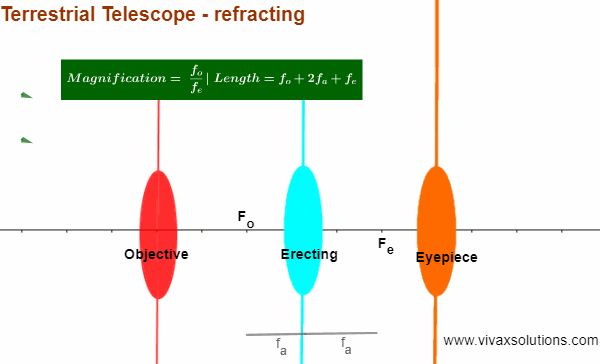The above animation is a terrestrial telescope, a refracting telescope. It has evolved from another refracting telescope, the astronomical telescope that produces an inverted image, making it not suitable for viewing objects on the Earth.
The terrestrial telescope has addressed the issue to some extent: it has a third lens in auxiliary capacity, just to erect the image formed by the objective lens.
When the second image is formed at the focus of the eyepiece, the final image is formed at infinity for viewing, while minimizing the strain on the eyes.
Length of the telescope = fo + 2fa + fe
The length of the telescope, however, can be minimized by letting the image from the objective formed at a distance of 2 x focal length of the erecting lens, that in turn forms the image at the same distance on the opposite side of the lens.
The magnification, however, remains that of the astronomical telescope, when in the normal adjustment.
Magnification = fo/fe
Understandably, if fo is greater than fe, we get a greater magnification.
In addition to the greater length, there is another drawback in the terrestrial telescope: the greater the number of lenses, the greater the loss of light energy by reflection at the refracting surfaces of the lenses; as a consequence, the image becomes fainter.
You can practise the terrestrial telescope with the following simulation:







0 comments:
Post a Comment